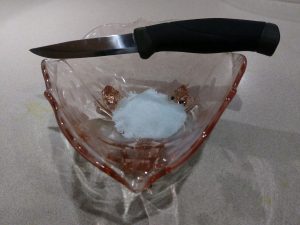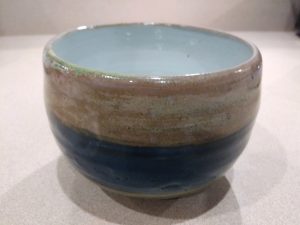
Everybody gets sad. Everyone has to deal with grief. Many people tip over from sorrow into depression. Usually it passes. But it feels horrible while you’re in it.
Life never stops keeps feeding us the stuff of grief. Friends and loved ones get sick and die. We lose jobs. Projects go bad. We get a new boss, and he or she sucks. Love affairs end. A friend betrays us. We thought we’d be doing better in our career by now. In our relationships by now. In our general living conditions by now. Maybe (like me) you work in one of the arts. You deal with rejections and disappointment. Our careers never match our ambitions. Some of our friends and colleagues become so overwhelmed, they take their own lives. We feel that loss. We feel the guilt that we didn’t save them. We feel the grief that they’ll never come back.
Sometimes the grief buries us like a wave crashing on the beach. Sometimes the sorrow seeps up and up until we realize we are over our heads in it. We have to take action. But that’s when action is hardest to take. We just feel like withdrawing from the world. We stay huddled in our cocoon of isolating pain.
There is no avoiding grief. It’s part of life. Some people get a heavier dose of it than others. And some people are more sensitive to it than others. However, there are ways to relieve it.
Tending to your mental health ought to be a practice, like diet and exercise. We know we will live happier and healthier with a sensible diet and regular exercise. Taking care of our mental health is the third leg of the stool that stabilizes our well-being. There are lots of ways to do it. In the upcoming newsletters I will talk about a variety. You don’t have to do them all. The best idea is to try them out and see which work the best for you. And then make a practice of them. If you can get others to commit to doing them with you, so much the better. Communing with people over your collective well-being is one of the best things you can do for your mental health. And you can help each other stick with the practice.
But let me give you one practice you can try today. You can do it on our own or with friends or family. But I urge you to try it as soon as possible. Procrastination kills good intents.
This is a salt water purification based on a ritual I learned from reading THE SPIRAL DANCE by Starhawk many years ago. It comes from a Wiccan practice, but you don’t have to share any of the beliefs of Wiccans for this to work for you. The ritual activates your psyche in a cleansing way no matter what your beliefs.

Stand (or sit) by the flowing water (even if it is just the water flowing from the faucet) and visualize this as the water flowing from the source of life—water that allows you to keep living, that feeds your body and soul, that cleanses you, that keeps you healthy—and that flows back into the nature, carrying nutrients that feeds life downstream, forever flowing and giving life. Truly visualize that flow of water as a flow of life that includes you. Give up any self-consciousness or embarrassment and let yourself feel it. Then put your chalice into the flow of life-giving, health-giving water and fill it to a comfortable height, maybe ¾ full.

Scoop up some of the salt with the knife and stir it into the water. As it is dissolving, recite the following: “This is the water of the sea, from which all life emerged. This is the water of the womb, from which I was born. This is the water of my blood, that keeps me alive.” The more you can feel and believe those words, the better. It is totally okay to feel like you are pretending, but go as fully from pretending to believing as you can.
When the salt is fully dissolved (and when you feel you’ve recited the incantation sufficiently), set down the knife. Seat yourself comfortably, and hold the chalice to your heart. Close your eyes, and let your griefs and disappointments and pain flow into the water. Remember them specifically and then let them flow into the water. If you feel it making you weep, go ahead and weep. All the better. Let it flow into the water. Take your time. Let yourself feel it fully and release it into the water. The water wants it. And you will feel better when you let those harsh emotions flow away. Take as much time as you need. And realize too that you do not need to heal your entire life in this one sitting. This is a practice to return to again and again. There is no failure. Just let as much of your grief and pain flow into the water as you can.
If you are sitting there and nothing is happening and you are thinking this whole thing is stupid, then reflect on that: Here you are, you have so much sorrow stored up in you, and you cannot even let it go. Feel the deep sorrow of THAT, and let that flow into the water, and that might help you start to let go of the rest.
When you are ready, rise and be grateful to the water. Stand by the stream, river, or turn the faucet back on and stand by the sink. Slowly pour the water into the flowing stream and say: “I release these griefs to nourish the life downstream.” Repeat it as you let the water slowly flow out of your chalice into the stream. Visualize all that you have released feeding the downstream life, just like cow manure and worm shit and bat guano make the finest fertilizers to nourish plant life. There is something of our grief, ritually given, that feeds the spirit world. And that cleansing us. It is like the great poet Robert Bly said: “It’s hard to grasp how much generosity / Is involved in letting us go on breathing, / When we contribute nothing valuable but our grief.”
At the end of the ritual, put the your tools away. Perhaps you will dedicate these items exclusively to ritual work in the future. Or maybe you will seek out other items to use exclusively for ritual in the coming days. As you do this, express gratitude for whatever you have experienced.
I’ve picked up many ritual practices over my lifetime, starting with an intense Catholic upbringing. I have been attending the annual week-long Minnesota Men’s Conference since 1995. Robert Bly started and led the Conference for many years and its teachers have included psychologists, poets, and ritual leaders, including shamanic teachers from Africa, from Central American, and North American Native medicine people. The teaching, work, and rituals there have often dealt with grief.
 I’ll get into more in the future, and I’ll also share some of the fiction I’m writing, some thoughts on Chicago theatre, and probably some essays from my kitchen (I love cooking).
I’ll get into more in the future, and I’ll also share some of the fiction I’m writing, some thoughts on Chicago theatre, and probably some essays from my kitchen (I love cooking).
Richard Engling is an actor and writer and author of VISIONS OF ANNA, a novel about healing the wounds of grief, setting a troubled soul to rest, and finding redemption in love. To learn more about VISIONS OF ANNA, visit Amazon. To read more posts like this, subscribe to Richard’s newsletter.
